Growing Chayote in Your Garden might sound intimidating, but trust me, it’s easier than you think! Have you ever dreamt of harvesting your own delicious, versatile squash right from your backyard? Imagine the satisfaction of serving a fresh, homegrown chayote dish to your family and friends. This isn’t just about gardening; it’s about connecting with nature and enjoying the fruits (or rather, vegetables!) of your labor.
Chayote, also known as vegetable pear or mirliton, has a rich history, particularly in Mesoamerica, where it’s been cultivated for centuries. It was a staple food for the Aztecs and Mayans, and its popularity has since spread worldwide. But even with its global appeal, many home gardeners are unaware of how simple it is to cultivate this amazing plant.
That’s where this DIY guide comes in! I’m going to share some simple, effective tricks and hacks that will help you successfully growing chayote in your garden, even if you’re a complete beginner. We’ll cover everything from choosing the right chayote fruit to plant, preparing your soil, and providing the necessary support for this vigorous vine. Why buy chayote from the store when you can have a constant supply right outside your door? Let’s get started and unlock the secrets to a bountiful chayote harvest!
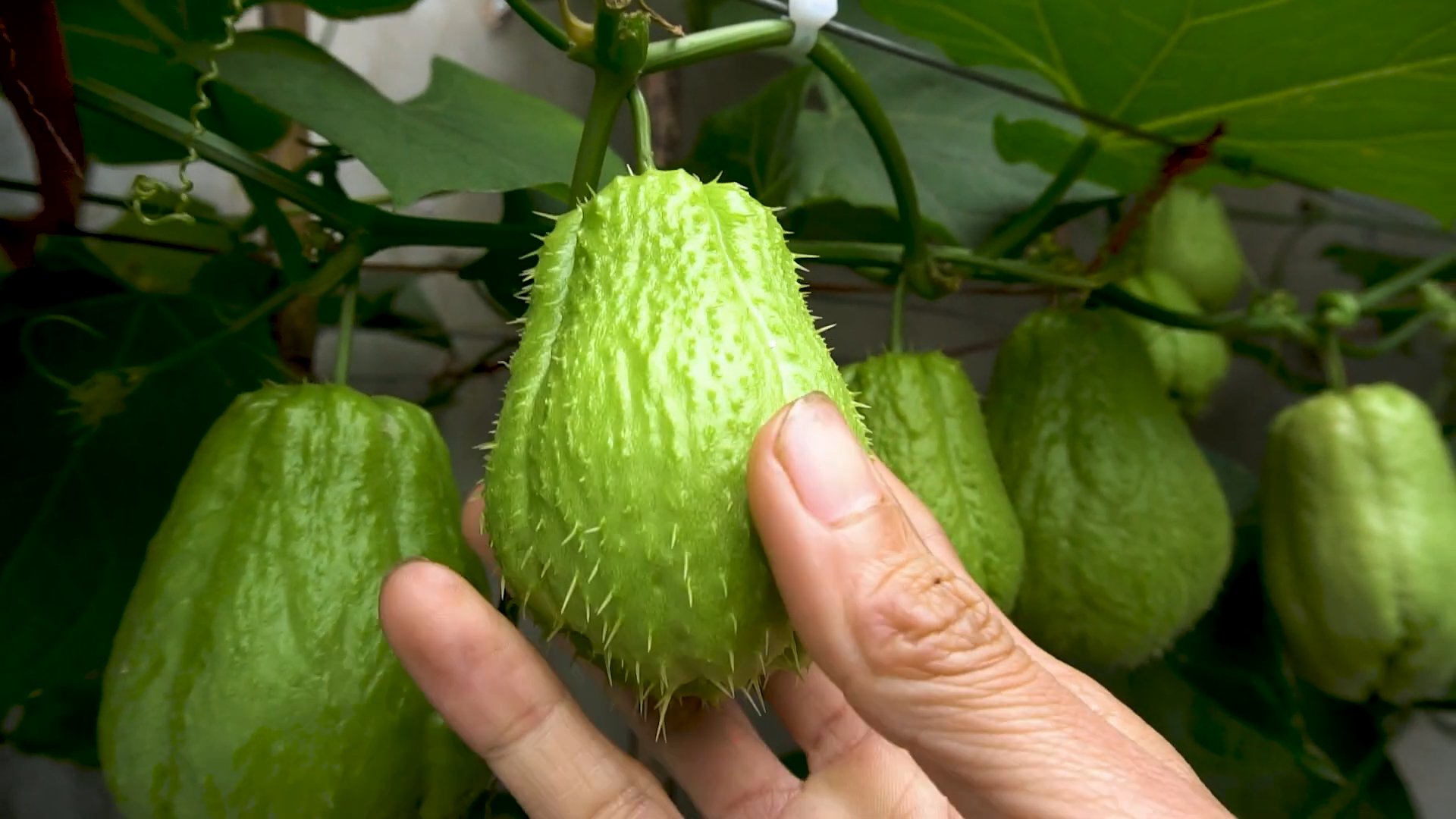
Growing Chayote: A Beginner’s Guide to This Versatile Vine
Okay, so you’re thinking about growing chayote? Awesome! It’s a fantastic vegetable (or is it a fruit? We’ll get to that!) that’s surprisingly easy to cultivate, and it offers a ton of culinary possibilities. I’ve been growing chayote for a few years now, and I’m excited to share my tips and tricks with you. Let’s dive in!
What is Chayote, Anyway?
Before we get our hands dirty, let’s talk about what chayote actually is. Chayote (Sechium edule) is a member of the gourd family, along with pumpkins, squash, and cucumbers. Technically, it’s a fruit, but it’s usually treated as a vegetable in cooking. It has a mild, slightly sweet flavor, similar to zucchini or summer squash. The entire plant is edible – the fruit, leaves, shoots, and even the root!
Chayote is a vigorous vine, so be prepared to give it plenty of space to grow. It’s also a perennial in warmer climates (zones 8-10), meaning it will come back year after year. In colder climates, you can still grow it as an annual.
Getting Started: Choosing Your Chayote and Preparing for Planting
The most unique thing about growing chayote is that you plant the whole fruit! That’s right, you don’t need seeds.
* Choosing Your Chayote: Look for a mature, unblemished chayote fruit at your local grocery store or farmers market. It should be firm and free of any soft spots or bruises. Ideally, you want a fruit that has already started to sprout – you might see a small shoot emerging from the broader end. If you can’t find one that’s already sprouting, don’t worry! You can encourage it to sprout yourself.
* Sprouting Your Chayote (If Necessary): If your chayote hasn’t sprouted, place it in a paper bag with a few apples or bananas. The ethylene gas released by the fruit will help stimulate sprouting. Check it every few days. You can also place the chayote in a warm, dark place, partially buried in moist potting soil. Keep the soil consistently moist, but not soggy. It can take several weeks for the chayote to sprout, so be patient!
* Choosing a Location: Chayote vines need plenty of sunlight – at least 6-8 hours per day. They also need well-drained soil that’s rich in organic matter. Choose a location that’s sheltered from strong winds, as the vines can be quite delicate.
* Preparing the Soil: Before planting, amend the soil with plenty of compost or well-rotted manure. This will provide the chayote vine with the nutrients it needs to thrive. You can also add a slow-release fertilizer to the soil.
* Building a Support Structure: Chayote vines are vigorous climbers, so they need a strong support structure. A trellis, arbor, fence, or even a sturdy tree will work well. Make sure the support structure is at least 6-8 feet tall and wide enough to accommodate the growing vine. I personally use a sturdy trellis made of metal pipes.
Planting Your Chayote: A Step-by-Step Guide
Now for the fun part – planting!
1. Dig a Hole: Dig a hole that’s about twice as wide and as deep as the chayote fruit.
2. Position the Chayote: Place the chayote fruit in the hole, with the sprouted end (if it has one) pointing upwards. If it hasn’t sprouted, lay the fruit horizontally.
3. Bury the Chayote: Cover the chayote fruit with soil, leaving the top third exposed. This will allow the sprout to emerge easily.
4. Water Thoroughly: Water the planting area thoroughly to settle the soil.
5. Mulch: Apply a layer of mulch around the base of the plant to help retain moisture and suppress weeds. I like to use straw or wood chips.
Caring for Your Chayote Vine: Watering, Fertilizing, and Pruning
Once your chayote vine is planted, it’s important to provide it with the proper care to ensure a healthy and productive harvest.
* Watering: Chayote vines need consistent moisture, especially during hot, dry weather. Water deeply and regularly, especially when the fruit is developing. Aim for about an inch of water per week.
* Fertilizing: Feed your chayote vine with a balanced fertilizer every few weeks during the growing season. You can also side-dress with compost or well-rotted manure.
* Pruning: Pruning is important for controlling the size and shape of the vine, as well as for improving air circulation and sunlight penetration. Remove any dead, damaged, or diseased growth. You can also prune back the vine to encourage branching and fruit production. I usually prune mine in late winter or early spring before new growth begins.
* Pest and Disease Control: Chayote vines are generally resistant to pests and diseases, but they can be susceptible to aphids, squash bugs, and powdery mildew. Inspect your plants regularly for any signs of infestation or disease. Treat any problems promptly with organic pest control methods, such as insecticidal soap or neem oil. For powdery mildew, improve air circulation and apply a fungicide if necessary.
Harvesting Your Chayote: When and How to Pick
Harvesting chayote is pretty straightforward.
* When to Harvest: Chayote fruits are typically ready to harvest about 4-6 weeks after flowering. The fruits should be firm and smooth, with a light green color. You can harvest them at any size, but they’re usually best when they’re about 4-6 inches long.
* How to Harvest: Use a sharp knife or pruners to cut the fruit from the vine, leaving a short stem attached. Be careful not to damage the vine when harvesting.
* Storage: Chayote fruits can be stored in the refrigerator for several weeks. Wrap them in a plastic bag to prevent them from drying out.
Culinary Uses for Chayote: So Many Possibilities!
Now for the best part – eating your homegrown chayote! Chayote is a versatile vegetable that can be used in a variety of dishes.
* Raw: Chayote can be eaten raw, sliced thinly and added to salads or slaws. It has a mild, refreshing flavor.
* Boiled or Steamed: Chayote can be boiled or steamed until tender. It can then be served as a side dish or added to soups and stews.
* Stir-Fried: Chayote is a great addition to stir-fries. It cooks quickly and absorbs the flavors of the other ingredients.
* Baked or Roasted: Chayote can be baked or roasted with other vegetables. It becomes tender and slightly sweet when cooked this way.
* Pickled: Chayote can be pickled for a tangy and flavorful condiment.
* Chayote Fries: Cut the chayote into fry shapes, toss with oil and spices, and bake or air fry until crispy.
* Chayote in Soups and Stews: Add diced chayote to your favorite soup or stew for added texture and nutrients.
I personally love using chayote in stir-fries and soups. It’s also great grilled with a little olive oil and herbs. Don’t be afraid to experiment and try different recipes!
Troubleshooting: Common Problems and Solutions
Even with the best care, you might encounter some problems when growing chayote. Here are a few common issues and how to address them:
* No Fruit Production: If your chayote vine is growing vigorously but not producing any fruit, it could be due to a lack of pollination. Chayote vines are monoecious, meaning they have separate male and female flowers on the same plant. You may need to hand-pollinate the flowers to ensure fruit production. Use a small paintbrush to transfer pollen from the male flowers to the female flowers. Also, ensure the plant gets enough sunlight and nutrients.
* Yellowing Leaves: Yellowing leaves can be a sign of nutrient deficiency or overwatering. Check the soil moisture and adjust your watering schedule accordingly. Fertilize the vine with a balanced fertilizer to provide it with the nutrients it needs.
* Pest Infestation: If you notice pests on your chayote vine, treat them promptly with organic pest control methods. Insecticidal soap and neem oil are effective against aphids, squash bugs, and other common pests.
* Powdery Mildew: Powdery mildew is a fungal disease that can affect chayote vines, especially in humid conditions. Improve air circulation around the plant by pruning back the vine. Apply a fungicide if necessary.
Tips for Success: My Personal Recommendations
Here are a few extra tips that I’ve learned over the years that can help you grow a thriving chayote vine:
* Start Early: Start sprouting your chayote fruit indoors a few weeks
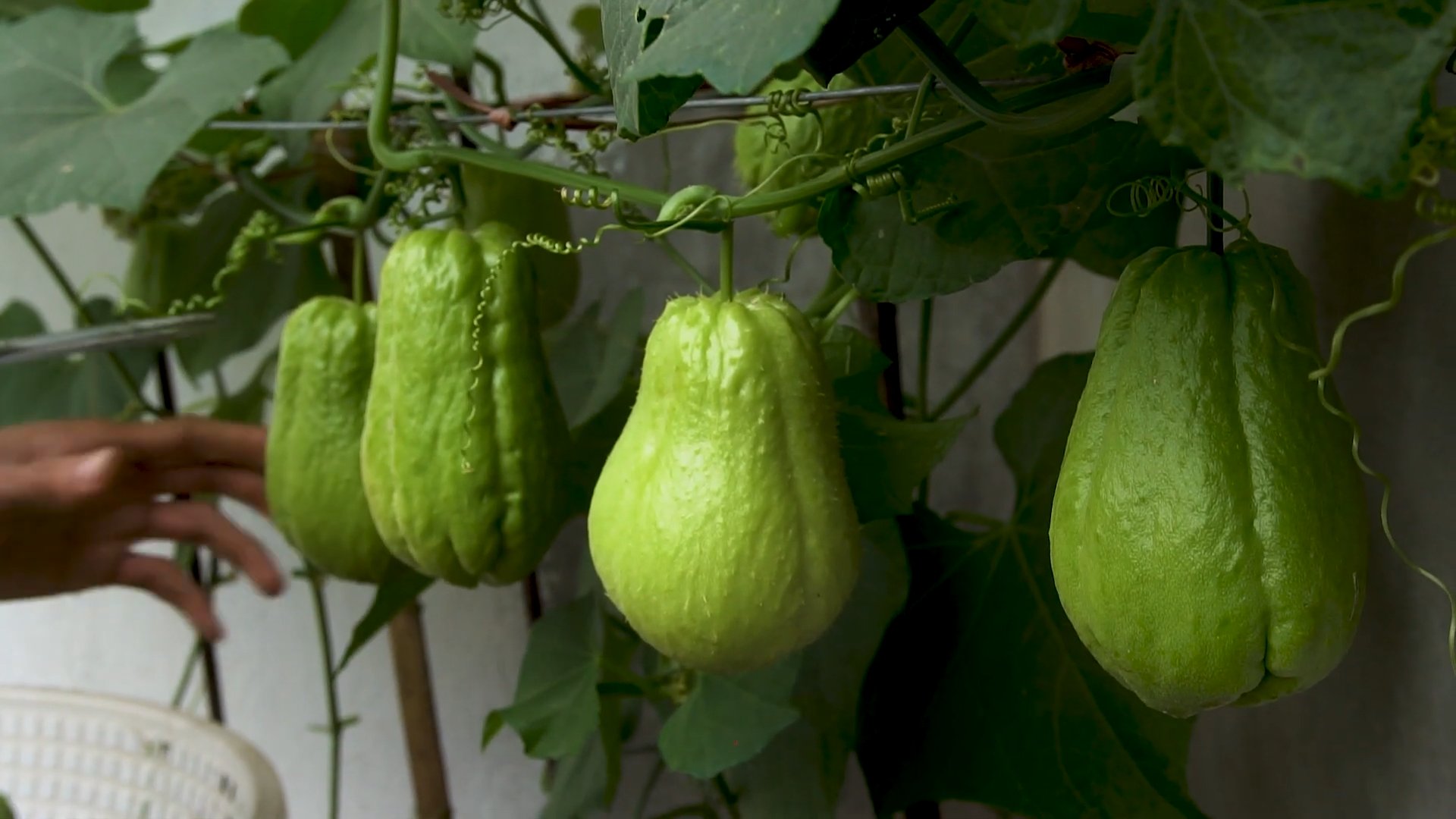
Conclusion
So, there you have it! Growing chayote in your garden is not only achievable but also incredibly rewarding. From understanding its unique growth habits to mastering the art of propagation and providing the right support, you’re now equipped with the knowledge to cultivate this versatile and delicious vegetable right in your own backyard.
Why is this DIY trick a must-try? Because it offers a sustainable and cost-effective way to enjoy fresh, organic chayote. Imagine stepping outside your door and harvesting your own supply of this nutritious gourd, knowing exactly where it came from and how it was grown. It’s a far cry from relying on store-bought options, which may have traveled long distances and lost some of their freshness and flavor along the way. Plus, growing your own chayote allows you to experiment with different varieties and enjoy the satisfaction of nurturing a plant from start to finish.
But the benefits extend beyond just fresh produce. Growing chayote is also an environmentally friendly practice. By reducing your reliance on commercially grown vegetables, you’re minimizing your carbon footprint and supporting a more sustainable food system. And let’s not forget the sheer joy of gardening! It’s a therapeutic activity that connects you with nature, reduces stress, and provides a sense of accomplishment.
Looking for suggestions or variations? Consider these ideas to personalize your chayote-growing experience:
* Vertical Gardening: If you’re short on space, train your chayote vine to grow vertically on a trellis or fence. This not only maximizes your growing area but also creates a beautiful and productive living wall.
* Companion Planting: Plant companion crops like beans, peas, or squash alongside your chayote to improve soil health and attract beneficial insects.
* Different Varieties: Explore different varieties of chayote, such as the smooth green variety or the spiny white variety, to discover your favorite flavor and texture.
* Creative Cooking: Experiment with different ways to cook chayote. It can be used in stir-fries, soups, salads, or even desserts. Get creative and discover new ways to enjoy this versatile vegetable. You can even pickle it!
* Seed Saving: Once your chayote plants are producing, save the seeds from the mature fruits to grow even more plants next season. This is a great way to become self-sufficient and build a sustainable garden.
We wholeheartedly encourage you to try this DIY trick and experience the joy of growing your own chayote. It’s a rewarding and sustainable way to enjoy fresh, organic produce, connect with nature, and enhance your gardening skills. Don’t be afraid to experiment, adapt, and learn along the way. Every garden is unique, and your chayote-growing journey will be too.
And most importantly, we want to hear about your experience! Share your tips, tricks, and successes with us in the comments below. Let’s create a community of chayote growers and learn from each other. Together, we can spread the word about this amazing vegetable and inspire others to grow their own food. So, grab your gardening gloves, find a sunny spot, and get ready to embark on a chayote-growing adventure! We can’t wait to see what you create. Remember, successful **chayote cultivation** starts with a little patience and a lot of enthusiasm. Happy gardening!
Frequently Asked Questions (FAQ)
What is chayote, and why should I grow it?
Chayote (Sechium edule) is a type of gourd that’s native to Mexico. It’s a versatile vegetable that can be eaten raw or cooked, and it’s a good source of vitamins, minerals, and fiber. Growing your own chayote allows you to enjoy fresh, organic produce, reduce your carbon footprint, and connect with nature. Plus, it’s a fun and rewarding gardening project!
How do I propagate chayote?
Unlike many vegetables, chayote is typically propagated from the whole fruit, not just the seeds. Select a mature, unblemished chayote fruit. Place the entire fruit horizontally in a pot filled with well-draining potting mix, with the stem end slightly exposed. Keep the soil moist but not soggy. In a few weeks, the fruit will sprout a vine. Once the vine is a few inches long, you can transplant the entire fruit (with the vine attached) into your garden.
What are the ideal growing conditions for chayote?
Chayote thrives in warm climates with plenty of sunshine. It prefers well-drained soil that’s rich in organic matter. Choose a location that receives at least 6-8 hours of sunlight per day. Chayote vines are vigorous growers, so they need a strong support structure, such as a trellis, fence, or arbor.
How much space does a chayote vine need?
Chayote vines can grow quite large, so they need plenty of space to spread out. A single vine can easily cover an area of 10-15 feet in diameter. If you’re growing multiple vines, space them at least 8-10 feet apart.
How often should I water chayote?
Water chayote regularly, especially during dry periods. Keep the soil consistently moist but not waterlogged. A good rule of thumb is to water deeply once or twice a week, depending on the weather conditions.
What kind of fertilizer should I use for chayote?
Chayote benefits from regular fertilization. Use a balanced fertilizer that’s rich in nitrogen, phosphorus, and potassium. You can also amend the soil with compost or other organic matter to improve its fertility.
How long does it take for chayote to produce fruit?
Chayote typically starts producing fruit within a few months of planting. The exact time will depend on the variety, growing conditions, and climate. You can expect to harvest your first chayote fruits in late summer or early fall.
How do I know when chayote is ripe?
Chayote is ripe when it’s firm and green. The skin should be smooth and unblemished. You can harvest chayote at any stage of maturity, but it’s best to pick it when it’s fully grown but still tender.
How do I store chayote?
Chayote can be stored in the refrigerator for several weeks. Wrap it in a plastic bag or container to prevent it from drying out.
Are there any pests or diseases that affect chayote?
Chayote is generally resistant to pests and diseases, but it can be susceptible to aphids, squash bugs, and powdery mildew. Monitor your plants regularly and take action if you notice any signs of infestation or disease.
Can I grow chayote in a container?
While chayote is best grown in the ground, it can be grown in a large container if necessary. Choose a container that’s at least 20 gallons in size and fill it with well-draining potting mix. Provide a strong support structure for the vine to climb on.
Is chayote a perennial or an annual?
In warm climates, chayote is a perennial, meaning it will live for several years. In colder climates, it’s typically grown as an annual, as the vine will die back in the winter. However, you can overwinter the fruit indoors and replant it in the spring.
Can I eat the chayote leaves and shoots?
Yes, the chayote leaves and shoots are edible and can be used in salads, stir-fries, or soups. They have a mild, slightly sweet flavor.
What are some ways to cook chayote?
Chayote is a versatile vegetable that can be cooked in many different ways. It can be boiled, steamed, baked, fried, or grilled. It can also be used in salads, soups, stir-fries, and even desserts. Some popular chayote recipes include chayote squash casserole, chayote fritters, and chayote pickles.
Where can I find chayote fruits to start growing?
You can often find chayote fruits at farmers’ markets, grocery stores with a good selection of produce, or specialty Latin American markets. You can also ask your local gardening friends if they have any chayote fruits to share.


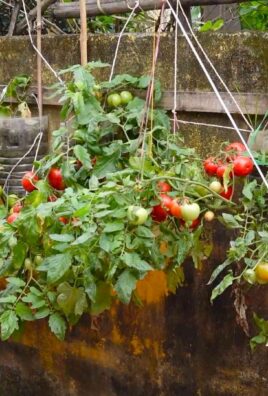
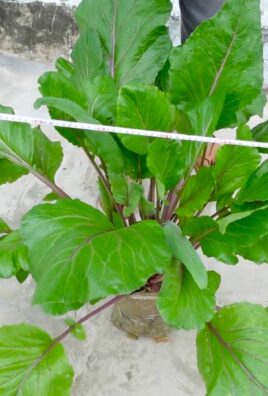
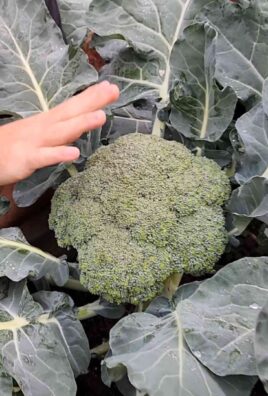
Leave a Comment